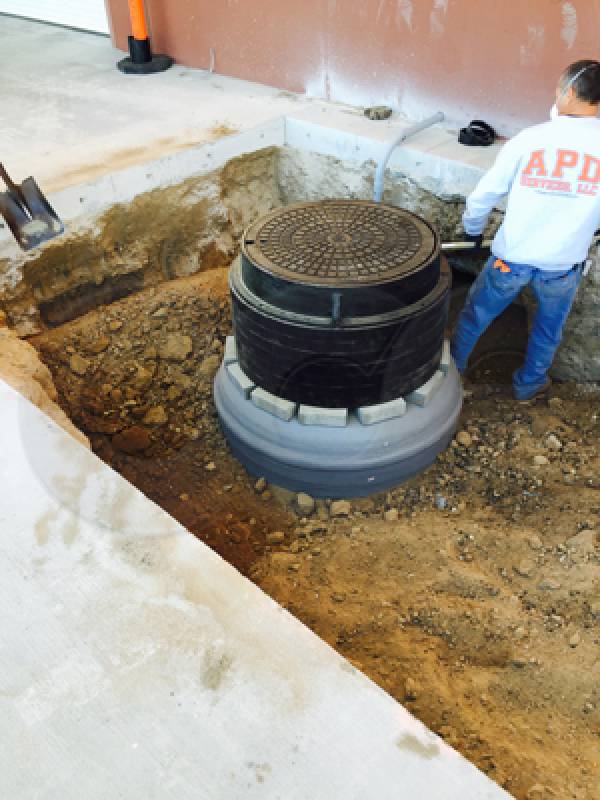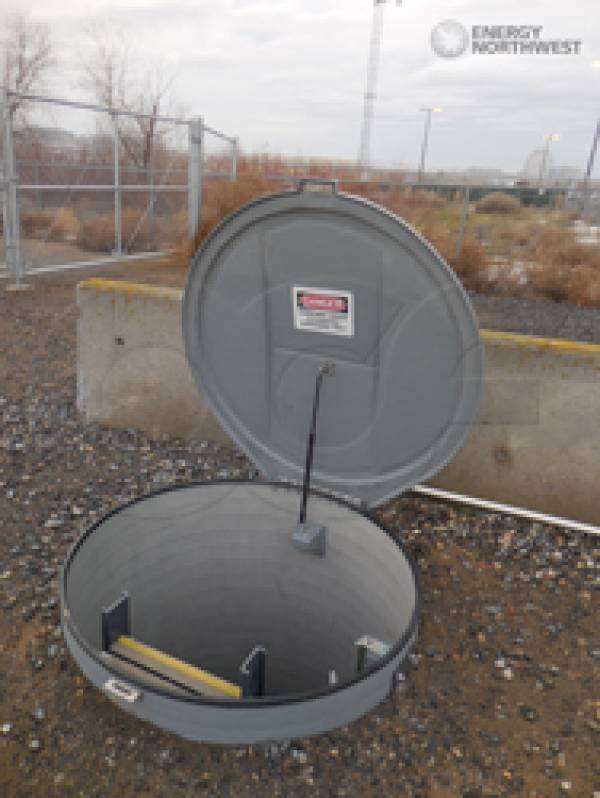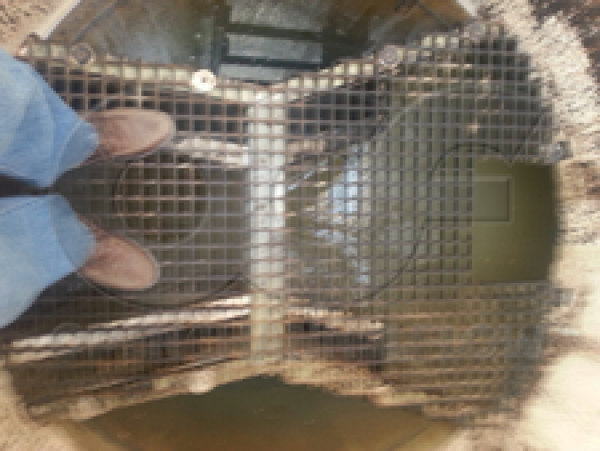This website uses a variety of cookies, which you consent to if you continue to use this site. You can read our Privacy Policy for
details about how these cookies are used, and to grant or withdraw your consent for certain types of cookies.
A Visual Guide to Installing a Fiberglass Manhole
Fiberglass Manholes are lightweight (~1/10th the weight of concrete), corrosion resistant, and watertight. Their installation is straight forward and can be accomplished with less manpower and equipment than a traditional concrete vault or manhole.
Where line downtime is a concern, at a prepared site, it can be a quick as 30 minutes from when the line it cut until to when flow is gonig throught the manhole!
The installation itself can be broken down into four stages:
Excavating the Site and Pouring the Slab
The area where the fiberglass manhole is going to be installed should be excavated large enough to accommodate the manhole and to provide a safe working environment for the installation personnel. Always follow federal, state, and local construction codes and apply industry best practices when it comes to open pit construction. Saving time here can have deadly consequences!
With the site excavated, a concrete foundation slab must installed for the manhole to sit on. The slab can be field poured in the excavation or poured off-site and then lowered into the manhole. If line downtime is a concern (usually for industries and jails/prisons), it may be more economical to pour the slab off-site and then move it into position when needed.
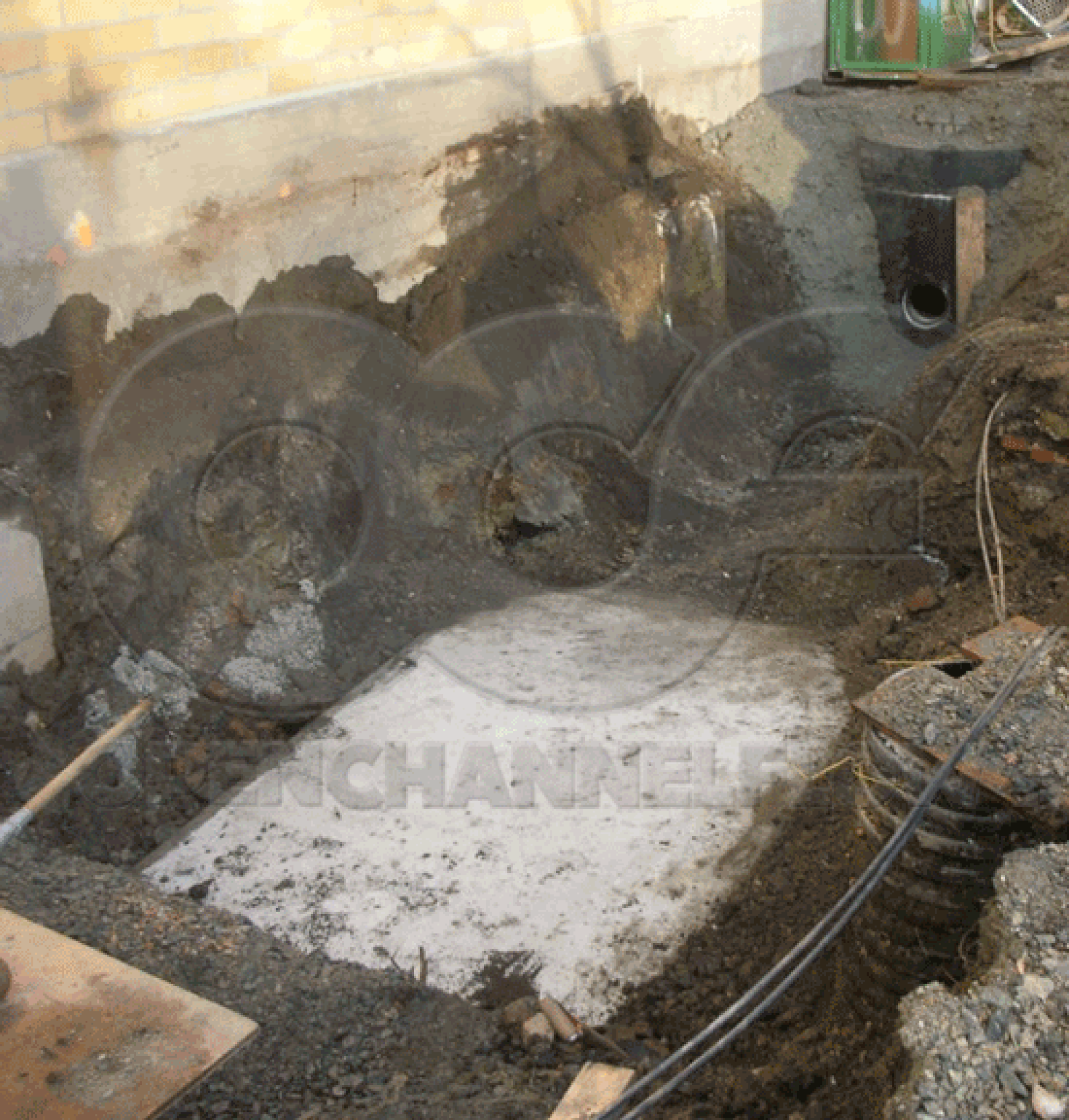
The concrete slab should be level from side-to-side and from front-to-back and must have a smooth, troweled surface. There should be no debris or exposed aggregate.
Setting the Manhole
With the site excavated and the slab poured, it is now time to set the manhole in place. Making sure the slab is free of debris and exposed aggregate, the manhole is lowered into position. A foam pad is provided with the manhole onto which the manhole will rest. When mounting legs are present on the integrated structure, foam spacers are provided for them as well.
The use of the pad(s) is optional but recommended. Occasionally the pad will need to be removed to allow shimming of the manhole to make it level. In general, though, the foam pad should be used whenever possible.
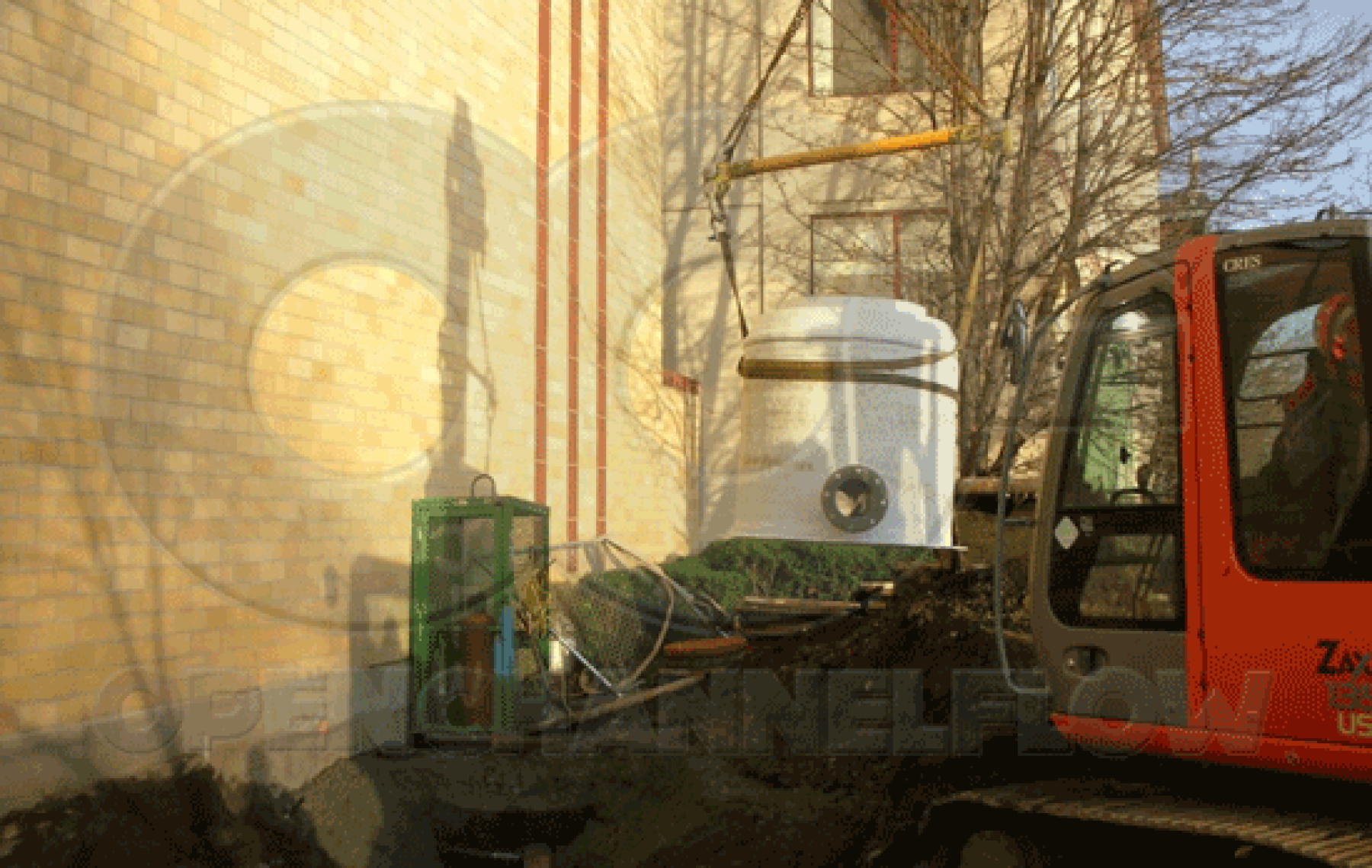
Guidelines can be tied to the pipe stubs to help move and position the manhole into place. Only use Nylon or similar fabric slings when moving a fiberglass manhole – never use cables or chains. When moving a manhole, plan the move in advance and use slow, smooth movements to avoid overturn.
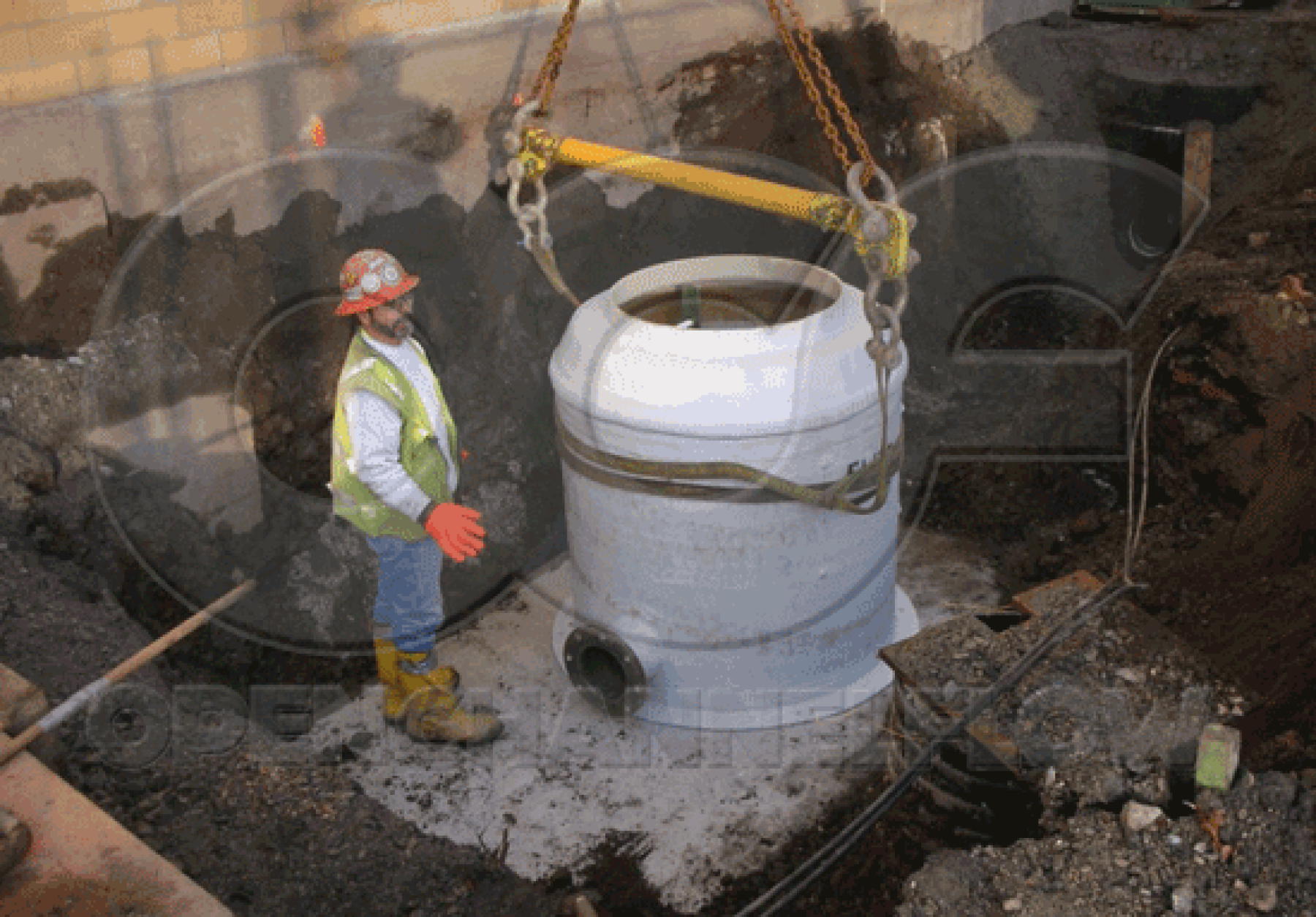
With the manhole set on the slab, it can now be secured into place. Wedge style (or similar) anchors are commonly used to secure the manhole. Preset (cast) anchor bolts are generally not recommended as they provide little leeway or flexibility if position of the manhole needs to be adjusted.
Piping Connections
There are three styles of connections available for fiberglass manholes:
- Pipe stubs (with flexible couplings)
- Flanges
- Caulking collars
Pipe stubs with flexible couplings are the most common connection type. Here a pipe stub is laminated to the manhole or integrated structure to mate up to the line piping. A flexible coupling is provided with stainless steel clamps to seal the connection between the two pipes and make it watertight.
Alternatively, 150 lb. flat-faced flanges may be provided – either in one hole or two hole pattern – where a rigid connection is required or where the materials of construction available for the standard flexible coupling are not suitable with the process conditions.
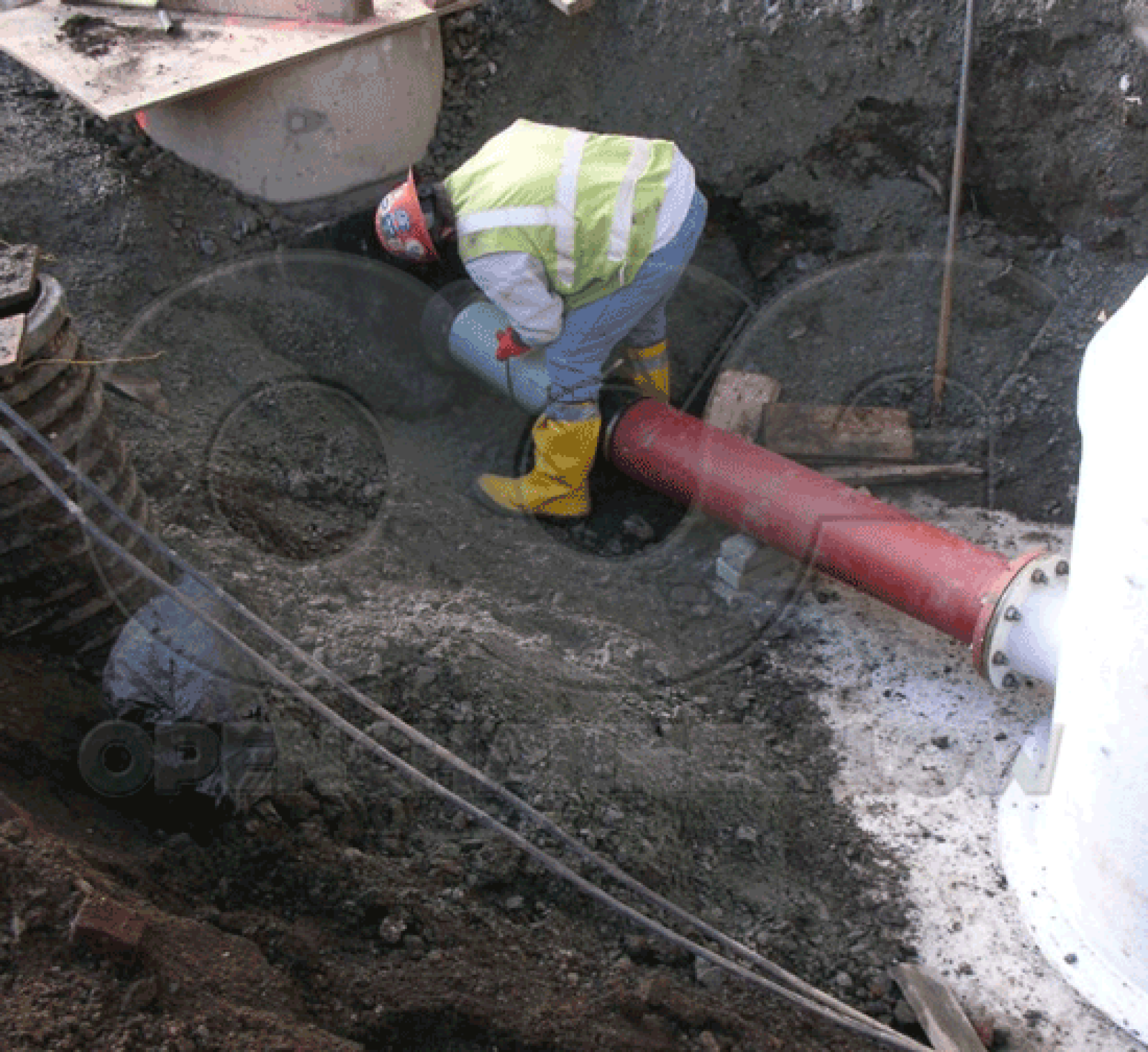
On very rare occasions caulking collars may be provided. Caulking collars are oversized pipe stubs into which the line piping is slid. The annular space between the two pipes is then packed with a watertight compound or material (i.e. oakum). The primary use for caulking collars is where off-angle piping needs to connect to the structure. Note, though, that off-angle piping is not recommended for use with flow monitoring manholes.
Backfill
With the fiberglass manhole set and secured, the excavation can now be backfilled. Starting under the piping connections and any portion of the structure extending outside of the manhole barrel, fill should be installed evenly around the manhole in lifts of no more than 12-inches [30.48 cm].
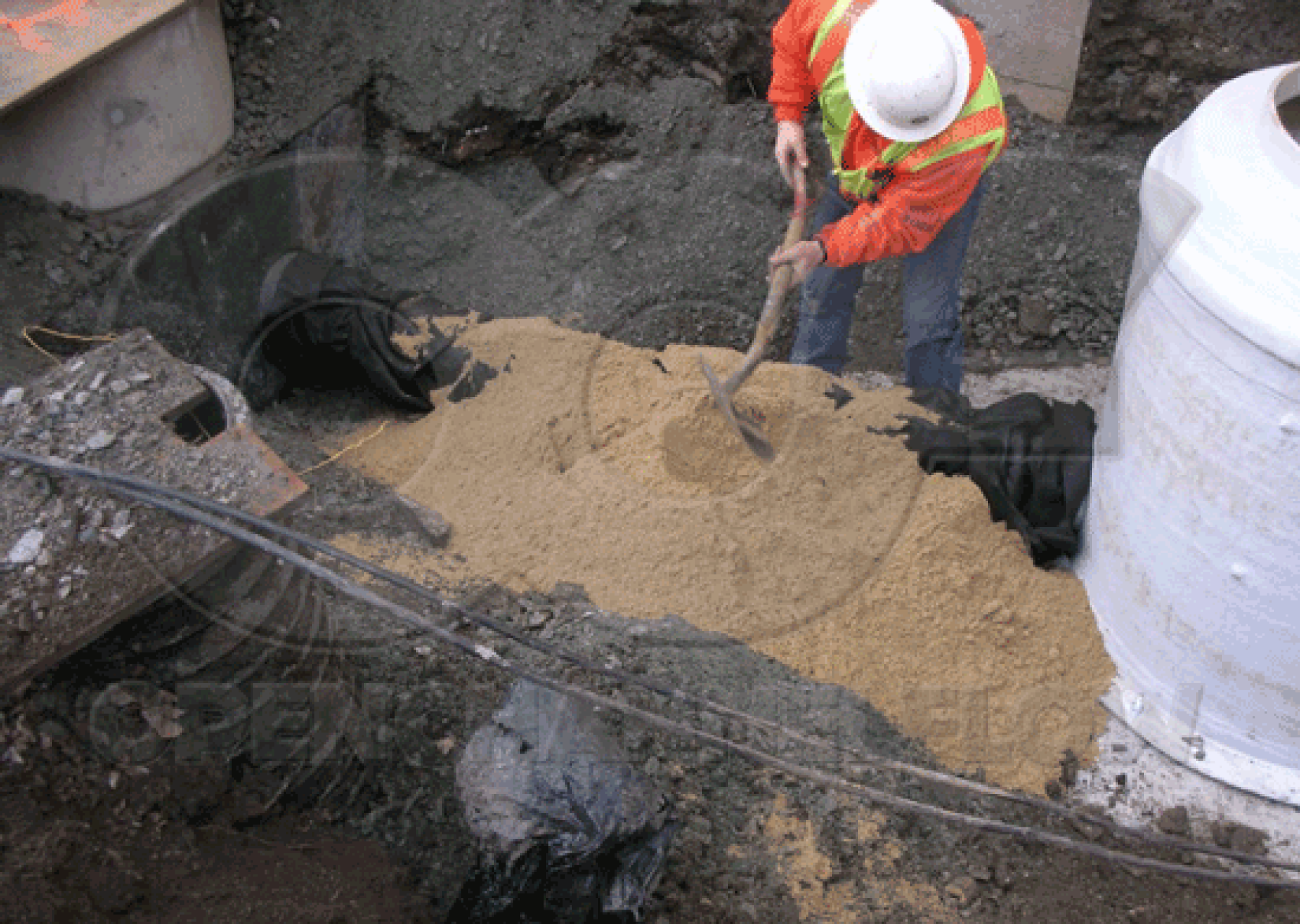
Backfill should be clean and without construction debris or materials larger than 1-inch [2.54 cm] in size. Sand or pea gravel are the recommended backfill materials, although other materials may be suitable. Consult a knowledgeable engineering firm to obtain advice on proper backfill materials and procedures when in doubt.
Rushing the backfill (i.e. backing up a dump truck and emptying the bed all at once) and using low quality fill materials (construction rubble) should be avoided at all costs.
Although the photos above are for a H-20 style flow metering manhole, the steps shown here apply to all Openchannelflow fiberglass manholes regardless of the type, diameter, or integrated structure. While individual details may vary from project to project, the general steps above will apply to all installations.
Related Blog Posts
Explore more insights in our blog.

LOCATIONS IN ATLANTA, GA & BOISE, ID


